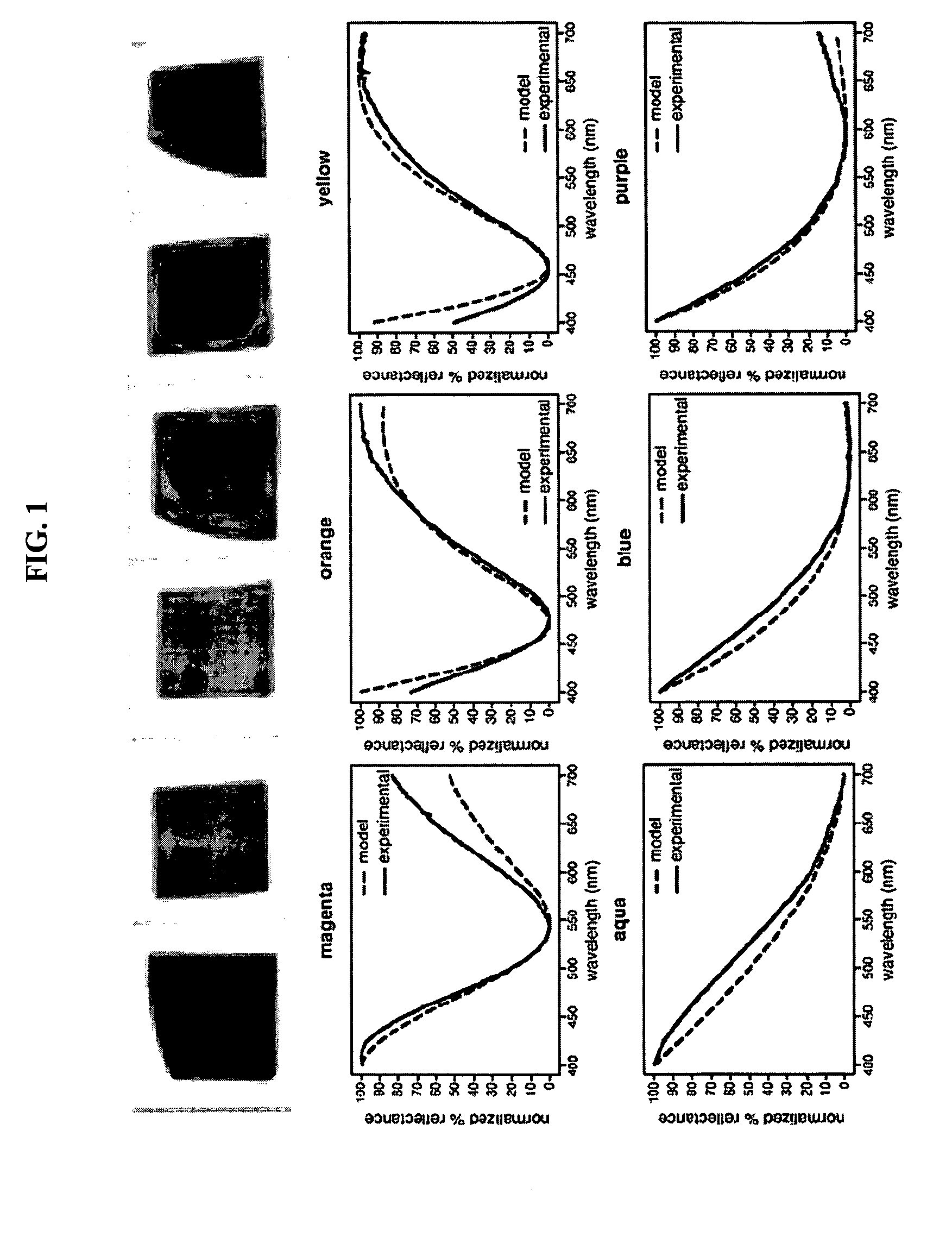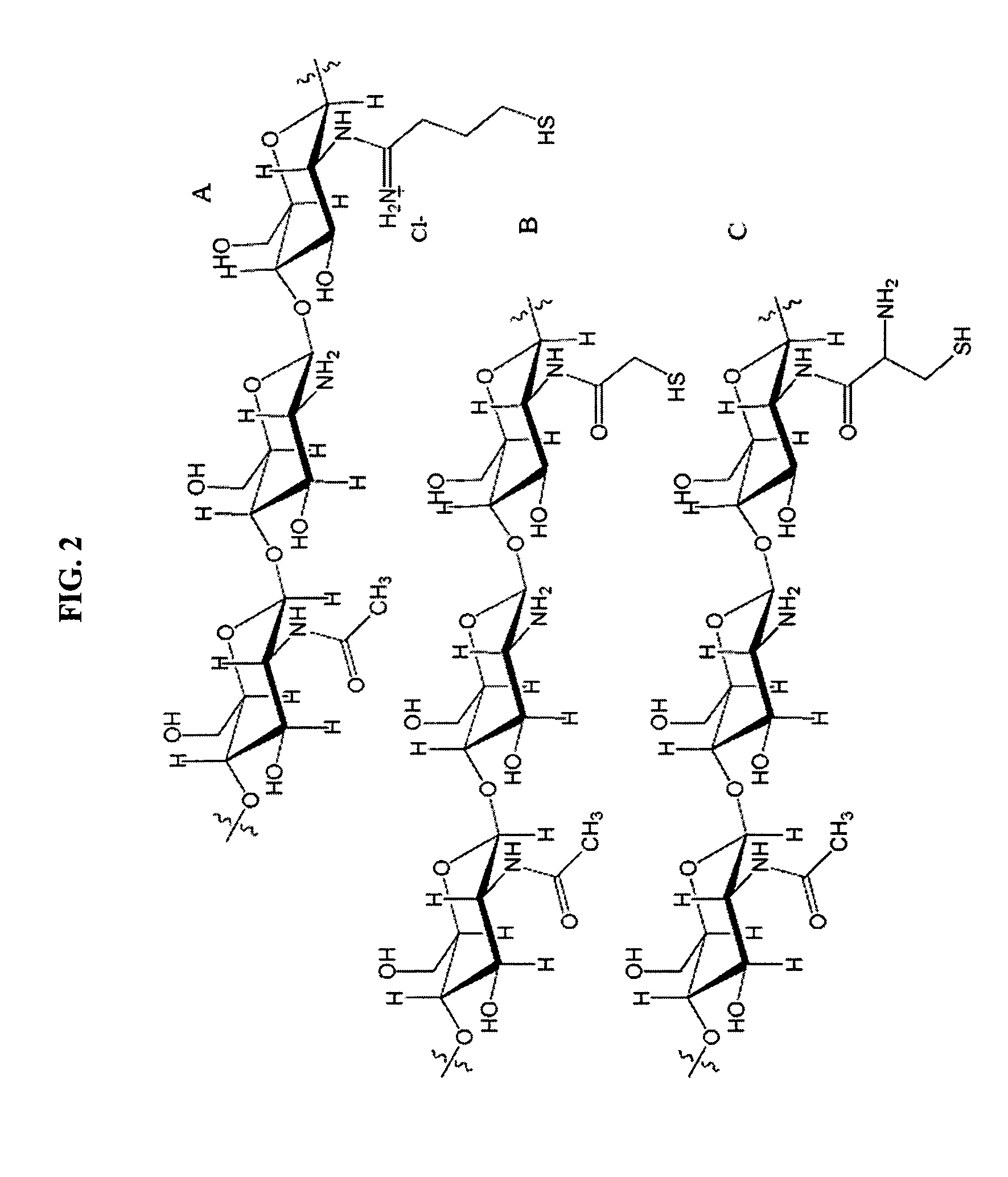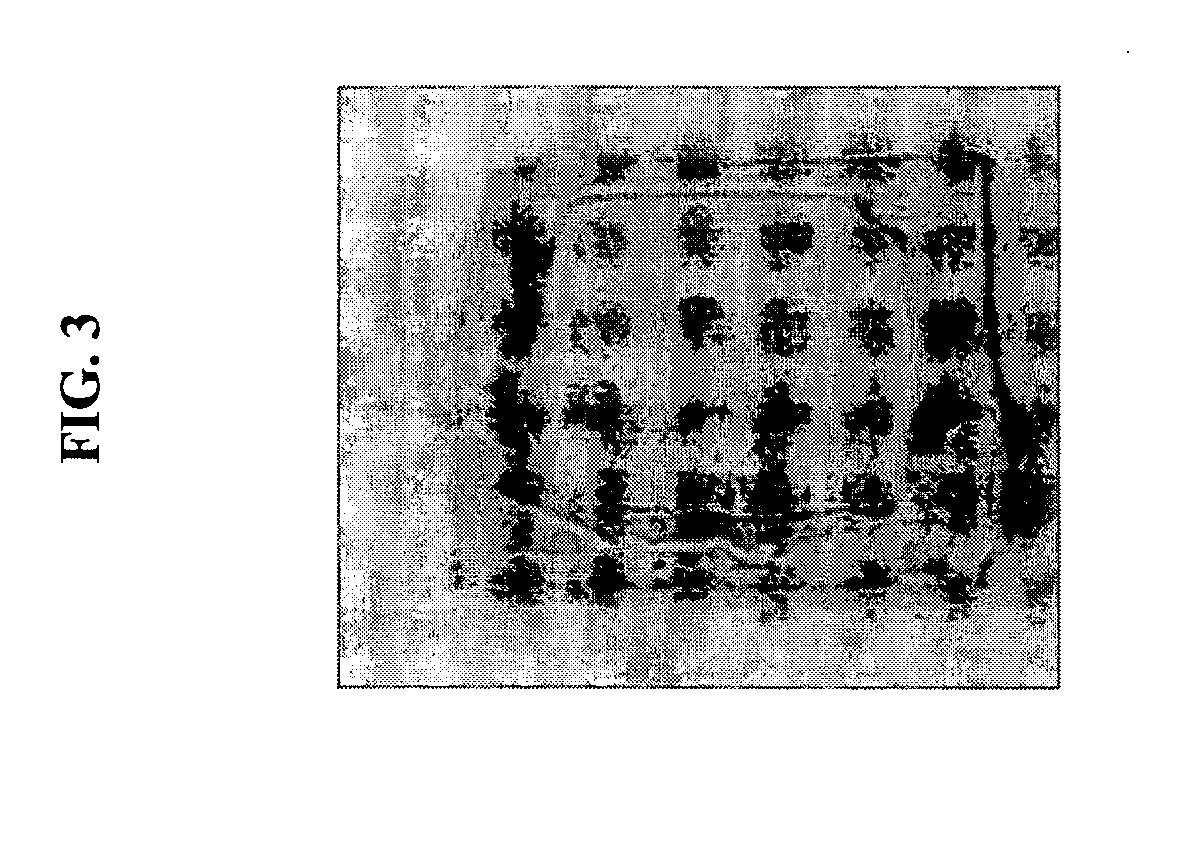Multilayer films
a technology of multi-layer films and chitosan, applied in the field of multi-layer films, can solve the problems of limiting the application, modification, and processing of chitin and chitosan, and their low solubility, and limiting their application and specificity
- Summary
- Abstract
- Description
- Claims
- Application Information
AI Technical Summary
Benefits of technology
Problems solved by technology
Method used
Image
Examples
example 1
Chitosan Films
Materials
[0076]Chitosan of high molecular weight (240 kDa) and greater than 70% deacetylation was supplied by Protan (Raymond, Wash.).
Chitosan Preparation
[0077]As previously described, commercially purchased chitosan was decolorized, further deacetylated to improve solubility, and purified to remove extraneous material, such as pieces of crab shell, achieving approximately 80% deacetylation. The degree of deacetylation was determined using two independent methods: H1 NMR and IR. Integration of three key H1 NMR (50 8C, 2% CD3COOD in D2O with trace sodium phosphate) peaks, taken on a 400 MHz Brucker NMR, indicated that the degree of deacetylation was 80.1%. The IR spectrum of a chitosan KBr pellet taken on a Nicolet Impact 400D (Madison, Wis.) had a large amide I peak at 1653 cm−1, which was indicative of an approximately 78% deacetylated chitosan according to Mima et al, J. Appl. Polymer Sci. 28, 1909 (1983). The UV-visible spectra taken on a Hewlett-Packard 8453 spectr...
example 2
Alginate Films
Materials
[0079]Alginic acid sodium salt from brown algae, ethylenediaminetetraacetic acid (EDTA), and all metallic salts were purchased from Sigma-Aldrich. The alginate salt had an approximate mannuronic / guluronic ratio of 1.56, a degree of polymerization range of 400-600, and a molecular weight (Mw) range of 80,000-120,000. All chemicals were used as received. Room-temperature ultrapure water (Millipore QPAK system) was used to make all solutions and for silicon wafer cleaning and film rinsing procedures.
Alginate Thin Film Deposition and Cross-Linking
[0080]Quantities of sodium alginate, ranging from 0.2 to 0.4 g, were dissolved in 30 mL aliquots of ultrapure water. The solutions were filtered in bulk through a coarse fritted glass filter funnel and degassed in a sonicator for 5 min. Further filtration was performed using 0.8 fm Nalgene syringe prefilters (VWR). Small amounts of solutions (˜0.3 mL) were dispensed onto fragments of polished silicon wafers (of typical ar...
example 3
Ca2+-Alginate Films of Different Thicknesses
[0082]Ca2+-Alginate films were produced by spin coating as described herein. The thicknesses of these Ca2+-Alginate films (in nm) and their associated color are 266.5 (magenta), 226.2 (orange), 219.9 (yellow), 122.4 (aqua), 102.8 (blue), and 95.8 (purple). The mean refractive index is 1.521. In FIG. 1, normalized reflectance spectra in the visible wavelength regime (solid curves, measured from reflectance spectrometry) are shown for each film, along with the model predictions for the same wavelength range (dashed curves, calculated using ellipsometer-determined thickness and index values).
[0083]These results also provide insight as to the effects of deposition spin speed on structural color for alginate-Ca2+ cross-linked thin films. Control over the structural coloration of alginate films is also highly tunable. Films of various thicknesses were produced with a wide variety of reflected colors. Because of the short duration of the Ca2+cros...
PUM
| Property | Measurement | Unit |
|---|---|---|
| thickness | aaaaa | aaaaa |
| refractive index | aaaaa | aaaaa |
| refractive index | aaaaa | aaaaa |
Abstract
Description
Claims
Application Information
 Login to View More
Login to View More - R&D
- Intellectual Property
- Life Sciences
- Materials
- Tech Scout
- Unparalleled Data Quality
- Higher Quality Content
- 60% Fewer Hallucinations
Browse by: Latest US Patents, China's latest patents, Technical Efficacy Thesaurus, Application Domain, Technology Topic, Popular Technical Reports.
© 2025 PatSnap. All rights reserved.Legal|Privacy policy|Modern Slavery Act Transparency Statement|Sitemap|About US| Contact US: help@patsnap.com



